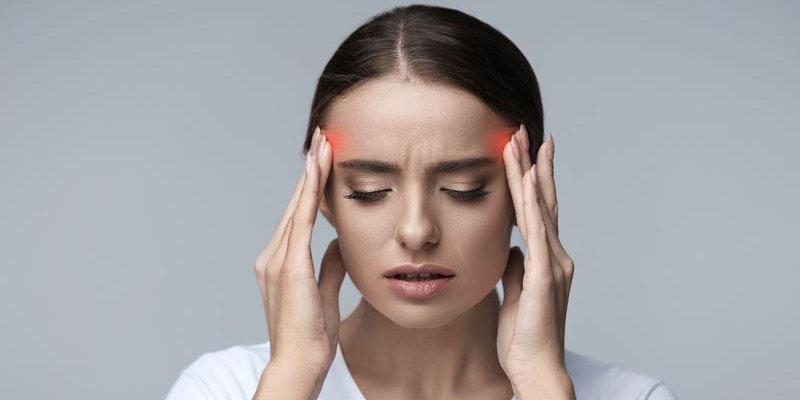Managing TMJD

Originally Posted on March 30, 2016
TMJD, or temporomandibular joint dysfunction, can be quite the mouthful! An estimated 10 million Americans suffer from TMJD due to hereditary and environmental contributing factors such as posture, hormones, occupation, and stress. Only 5 to 10 percent of those affected seek medical treatment, and on average wait more than 4 years to do so! What can we do?
Temporomandibular Joint Dysfunction (TMJD):
First, let’s get acquainted with the key players: the temporomandibular joint (the TMJ of TMJD) acts like a hinge to connect your jawbone to your skull. Dysfunctions (the D in TMJD) can cause pain in the joint and surrounding muscles that help it to move. Exact causation may be
difficult to determine because it may be a combination of issues.
Contributing factors may include:
- Posture
- Ergonomics (such as how your desk is set up)
- Arthritic changes
- Untreated occlusal trauma to your teeth
- Loss of posterior teeth (premolars and molars)
- Muscle strain or guarding
- Neuromuscular changes
- TMJ Disc derangements
- Cervical spine issues
- Environmental factors
Possible indicators of TMJD include:
- Pain in your face, ear, teeth, or jaw
- Grinding, clicking or other joint noises
- Limited or excessive movement
- Asymmetrical movement
- Headaches and/or jaw aches
- Nausea
- Fascial numbness and tingling
Thankfully there are measures you can take to regain your natural movement and decrease pain!
When self-managing you can:
- Correct your posture– Remove the pressure from your head, neck, jaw, and spine with proper postural alignment.
- Check and protect your eyes– Issues with vision may cause squinting and awkward head placement may strain the muscles in your eyes and face that can increase symptoms.
- Regulate your temperature– Bracing yourself against the cold (indoors and out) can cause minute posture, bracing, and muscle tension in the neck and jaw.
- Improve your sleep environment– Arrange your pillows in a way that allows your head and neck to rest in a neutral alignment.
- Be mindful of clenching your teeth– Are you clenching? Try gently touching the tip of your tongue to the roof of your mouth to relax the jaw.
- Ice or heat as necessary– Check out our blog Ice vs. Heat to follow guidelines for ice and heat.
- Stress Management– Easier said than done, but deep breathing can help lessen stress. The mantra of the TMJD sufferer should be, “Teeth apart and breathe!”
- Avoid chewing gum– Chewing gum is similar to doing push-ups with your jaw, avoiding this can lessen symptoms significantly.
- Eat smaller meals and snacks throughout the day– Eating smaller meals more frequently, and avoiding harder foods can lessen the amount of work your jaw must perform.
- Please see our full blog Tips for TMJDfor more details.
When self-care isn’t enough it is best to seek a clinician to help manage symptoms. Physical Therapy can assist TMJD suffers in restoring the natural movement of the jaw as well as aid in strategies to decrease pain.
Physical Therapy for TMJD may include:
- Postural education– This helps you to become aware of the placement of your head, neck, and shoulders, improve their neutral resting positions to alleviate pressure, and can decrease pain.
- Improving Jaw Movement– Using skilled hands-on techniques, your PT may use manual therapy to gently increase movement, function, and relieve tissue and joint pain.
- Special Pain Treatments– Your PT may opt to use modalities, such as electrical stimulation or ultrasound, when severe pain is present.
- Referral to a Dentist– If necessary, specific mouth guards created by a dentist who specializes in TMJD may be beneficial for implementing a neutral position to relieve pain, relax the jaw, and improve function.
Try PT first! There is no need to live with unnecessary pain! If you experience signs or symptoms, it is best to contact your healthcare provider as soon as possible.
Attend our Demystifying TMJD lecture with PT Lauren Masi July 26 to learn more!
Written by Lauren Masi, PT, DPT, OCS, ATC Physical Therapist & Clinical Services Coordinator at Lafayette Physical Therapy, Inc.
Edited by Julia Slater, BA Community Outreach Coordinator
References
[Disease and Conditions: TMJ Disorders]. Retrieved from http://www.mayoclinic.org/diseases-conditions/tmj/basics/treatment/con-20043566.
Harrison, A. L. (2016). Orofacial Pain: Physical Therapy Examination and Intervention. Lecture presented at APTA Combined Sections Meeting, Anaheim.
[The TMJA Association, Ltd.]. Retrieved from http://www.tmj.org/.
[Temporomandibular Joint Disorder]. (2011). Retrieved from http://www.moveforwardpt.com/symptomsconditionsdetail.aspx?cid=0cb55ce4-d260-4887-ad29-d8cb18e0b91e.
Disclaimer
This article is intended as general health information and is not intended to provide individual specific medical advice, professional diagnosis, opinion, treatment or services to you or any other individual. Please consult your doctor or a medical professional before starting or changing a health, fitness, or nutrition program.
